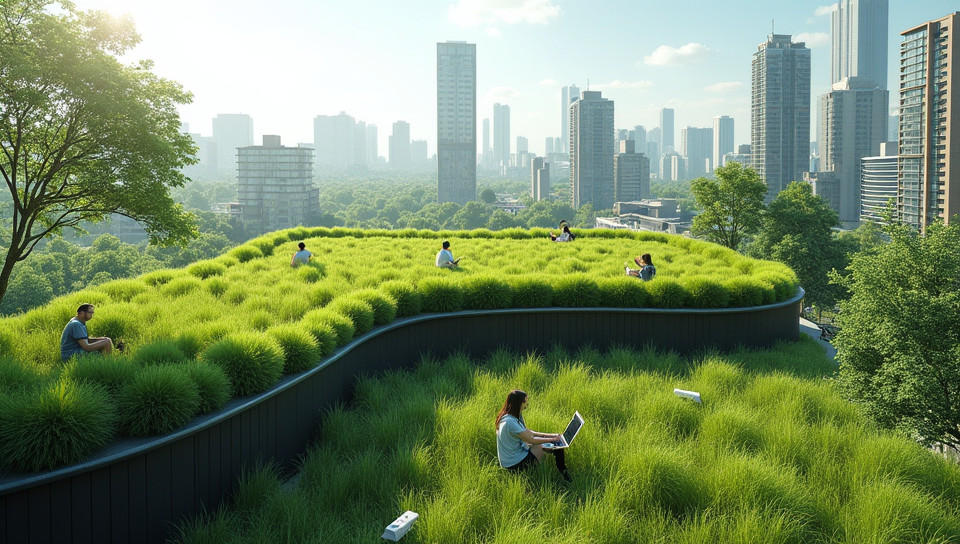Green roofs improve building temperature regulation 76%

The Power of Green Roofs: Regulating Building Temperatures Like Never Before
As cities continue to grow and urbanization increases, the need for sustainable and energy-efficient building designs becomes more pressing than ever. One innovative solution that has gained significant attention in recent years is green roofs. These rooftop gardens not only provide a natural oasis in the midst of bustling cityscapes but also offer numerous benefits when it comes to regulating building temperatures.
What are Green Roofs?
Green roofs, also known as living roofs or eco-roofs, are designed to reduce the urban heat island effect by providing insulation and cooling buildings. They consist of a waterproofing layer, growing medium, plants, and sometimes additional features such as irrigation systems and drainage.
The Science Behind Green Roofs
Research has shown that green roofs can significantly reduce building temperatures during hot summer months. This is due to several factors:
- Reduced surface temperature: Plants absorb solar radiation and release heat through evapotranspiration, which helps to cool the surrounding air.
- Increased shading: Vegetation provides shade, reducing direct sunlight exposure on buildings and surrounding surfaces.
- Improved insulation: Green roofs can act as a thermal barrier, reducing heat transfer between the building and the exterior environment.
Benefits of Green Roofs
In addition to regulating building temperatures, green roofs offer numerous other benefits:
- Reduced energy consumption: By keeping buildings cooler in summer and warmer in winter, green roofs can lead to significant energy savings.
- Improved air quality: Vegetation helps to purify the air by removing pollutants and particulate matter.
- Increased biodiversity: Green roofs provide habitat for urban wildlife, such as birds, bees, and butterflies.
The Future of Building Design
As we continue to grapple with the challenges of climate change and urbanization, green roofs are likely to play an increasingly important role in building design. By incorporating these innovative solutions into our architecture, we can create more sustainable, energy-efficient, and livable cities for future generations.
In conclusion, green roofs offer a simple yet effective solution to regulating building temperatures and promoting sustainable urban development. As the world continues to evolve, it is essential that we prioritize innovative designs like green roofs to ensure a cooler, greener, and more resilient built environment.
- Created by: Thiago Castillo
- Created at: Dec. 19, 2024, 2:06 p.m.
- ID: 16821








